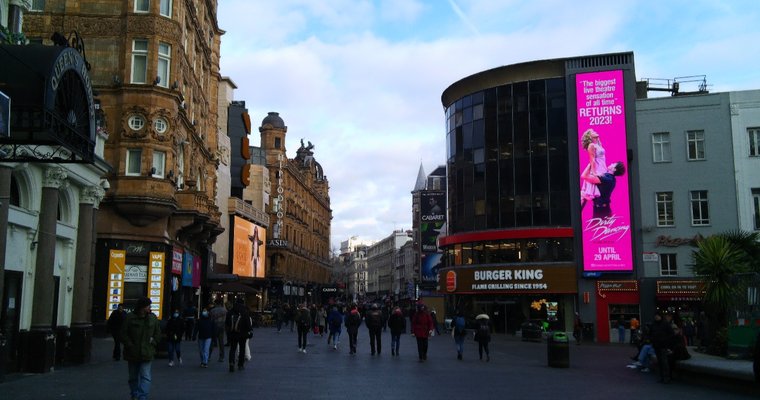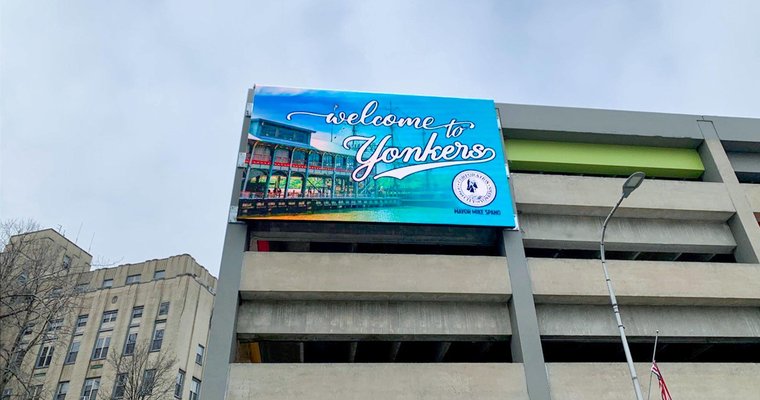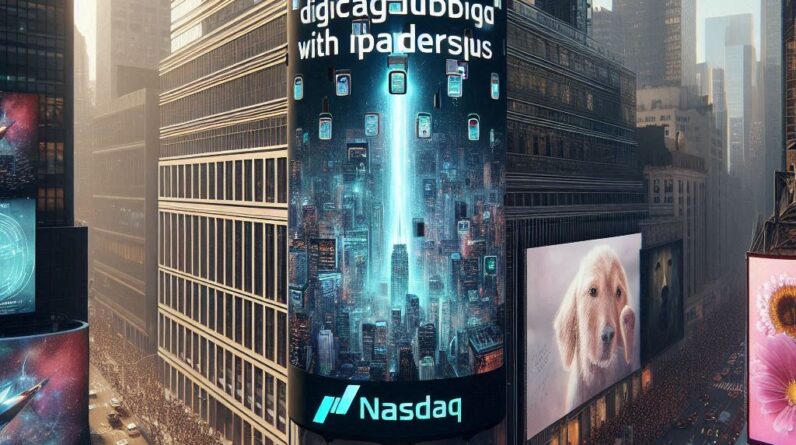
[ad_1]
How Soho Estates combined community, agility and innovation in Leicester Square digital transformation, with insights for protecting yourself, your community and your business against uncertain times.
 East-facing view of LED installation at Leicester Square. Courtesy of Soho Estates.
East-facing view of LED installation at Leicester Square. Courtesy of Soho Estates.
 |
John James is managing director at Soho Estates. Image provided. |
Is there a way to survive or even thrive unprecedented global challenges, including pandemic, recession and times of war? Yes, argued John James, managing director at Soho Estates, a London-based real estate firm and family business that has been operating for over 65 years, speaking in an exclusive interview with Digital Signage Today via video call.
A deep respect for history is a good first step, James explained, tilting the camera to show his collection of historical memorabilia decorating the shelves of his office; after all, “building the future, respecting the past” is the company motto. Businesses (and the people who run them) also need to be able to adapt to changing times, using technological change as a tool rather than an obstacle.
Indeed, James explains, this combination of respect for tradition with agility is part of why Soho has leaned into digital signage in Leicester Square; the mixture has proven powerful when added with long-term strategic thinking, a broad perspective, and deep investment in supporting the local community.
A family tradition
Speaking of history, Soho Estates has a colorful one, going back to its founding in 1958 by Paul Raymond, a business magnate the BBC dubbed “Britain’s Hugh Hefner,” who initially came to wealth via a variety of adult entertainment businesses. Sensing the impending demise of print media, Raymond sold off his assets and pivoted to real estate. “So basically, he bought property in and around Soho,” James said. “He famously said he would only buy property he could walk to.”
 |
South-facing view of LED installation. Courtesy of Soho Estates. |
Raymond left the company to his grandchildren. James, who took the helm in 2011, plans to do the same for his four grandchildren, and he said the experience has taught him values like long-term thinking and generational sensibility. “My short term view would be 25 years,” he explained. “My long term view will be 50 years, and the long term is another generation.
“We always say we never sell anything,” James said, and though the pandemic did force some selling, he’s a fierce defender of the family legacy. “We own a few buildings in Leicester Square,” James said. “When I walk through there with my grandchild, holding their hand, I will not be saying, ‘You used to own that.’ I’ll be saying, ‘You own that.'”
“An extraordinary place”
“Leicester Square is an extraordinary place, obviously, for tourism and visitors,” James said, explaining that it is London’s leading center for entertainment and serves as the nexus of the British film industry, with the square shutting down for major movie premieres.
Digital signs were installed on a building that was part of London’s rebuilding after World War II, on a block that includes the Odeon Luxe Leicester Square movie theater, a longtime icon for the cinema world. “And when you look at that space … it’s basically one big, black glass frontage. I’ve always looked at that and thought, ‘That’s like a TV — it needs to be switched on.'” This is especially true considering foot traffic. “52 million people walk along the north side of Leicester Square every year,” James said. “I always thought we could have a sign, but the politics of that have been very, very long and drawn out.”
 |
Digital signage in Ilona Rose House lobby. Courtesy of Chris Snook/Soho Estates/Paola Leon Design. |
James said he faced intense resistance for a few years from government authorities, such as the Westminster City Council. “Signage was kind of frowned upon — a little bit too futuristic for the authorities,” James explained, though loopholes began emerging over time. “There was always an ability to put a sign behind glass — the law allowed you to do that,” he said. “But we wished to do it in a proper way. So, we went and we applied, reapplied again, and we kept going. I have a file that goes back about 15, 20 years on this,” he added ruefully.
Digital signs were becoming more popular year by year, however, including movie theaters that displayed “now showing” style content. The public was embracing digital signage, and the authorities were warming to it.
Around this time, Soho sought an appeal on the permit denial, and a city inspector came to investigate the site. “He looks around Leicester Square and says, ‘Well, there’s plenty of signs here, but why can’t you have one?'” James said.
Eager to get to work, James couldn’t resist closing the regulatory saga with a bit of humor. “When I first ever met the director of planning years ago, I said, ‘You know, I’m ambitious to get a sign on my building.’ And he basically said to me, ‘Over my dead body would you ever get a sign,'” James said. When the installation was complete, James displayed a commemorative photo of the city planner on the sign, photographed it, and sent the picture to the official. “He said I’ll never get a sign — well, there you are, you’re on it!” James chuckled. “He was quite amused by that.”
Soho Estates lost no time installing two Daktronics LED signs on the building along with an array of interior signage. James made sure that, until paying advertisers have purchased all the slots, there is free advertising available to a number of community businesses, which (like London in general) have felt the pain of pandemic and lockdown pressures.
 |
Digital signage in Ilona Rose House lobby. Courtesy of Chris Snook/Soho Estates/Paola Leon Design. |
“I said, ‘Look, we’ve got an opportunity here. Until they fill the screen, they’ll want to loop the content, so any of you guys can put your stuff up on Leicester Square, which normally isn’t affordable. But you can do it.’ So we did a little bit of community support here — just in the beginning, but it’s still good.”
“There’s never been anything, except for the Second World War, that has been quite as devastating as the COVID pandemic which closed the entire country,” James said, describing similar efforts throughout lockdowns to help his tenants and the local business community survive, from waiving rent during lockdowns to lobbying for government approval of outdoor dining. “It wasn’t so easy, but we had to do that,” he said. “Because if we didn’t help all these businesses … if you didn’t help them, they couldn’t survive this.”
Only the beginning
The signs are installed, but James is hungry for more. Inspired by eye-catching spectaculars emerging across the globe, James hopes to join the two signs with a large, curved LED, “so it’s just one big sign around the curve of that building.” He has ambitions to make this the site for one of the largest outdoor digital signs in the world, and he would like it to show a combination of special content (like for Leicester Square movie premieres) along with advertising and information — the kind installation that is itself an attraction for tourism. The company has also leveraged digital signage in the lobby of Ilona Rose House, a mixed-use development designed by Matt Architecture and Paola Leon Design (as pictured in photographed examples).
Tying this project together with the big picture of global business and technology changes and challenges, James said that success entails embracing change and adapting with it while respecting that we’re facing unprecedented challenges, from the speed at which technologies like augmented reality and AI are developing to the ongoing impact of the COVID pandemic and the U.K.’s battle with recession.
It’s impossible to predict the future as a business owner, so James advocates strategies including: have a broad perspective and long-term mindset, stay true to your values, and support your local community.
“All we need to do is persevere,” James said. “You’re to look at what’s gone before, not panic about what’s coming. We can’t control the weather. We can’t control the Ukrainian war. We can’t control certain things that affect the market. You’ve just got to go with it.”
What advice would James have for readers, particularly young people, struggling to navigate this situation? “Look at whatever you see in front of you as an opportunity,” James said. “What are you going to do? Are you going to make a difference?”
Daniel Brown is the editor of Digital Signage Today. He is an accomplished technology writer whose experience includes creating knowledge base content for a major university’s computing services department. His previous experience also includes IT project management, technical support and education. He can usually be found in a coffee shop near a large pile of books.
[ad_2]
Source link






